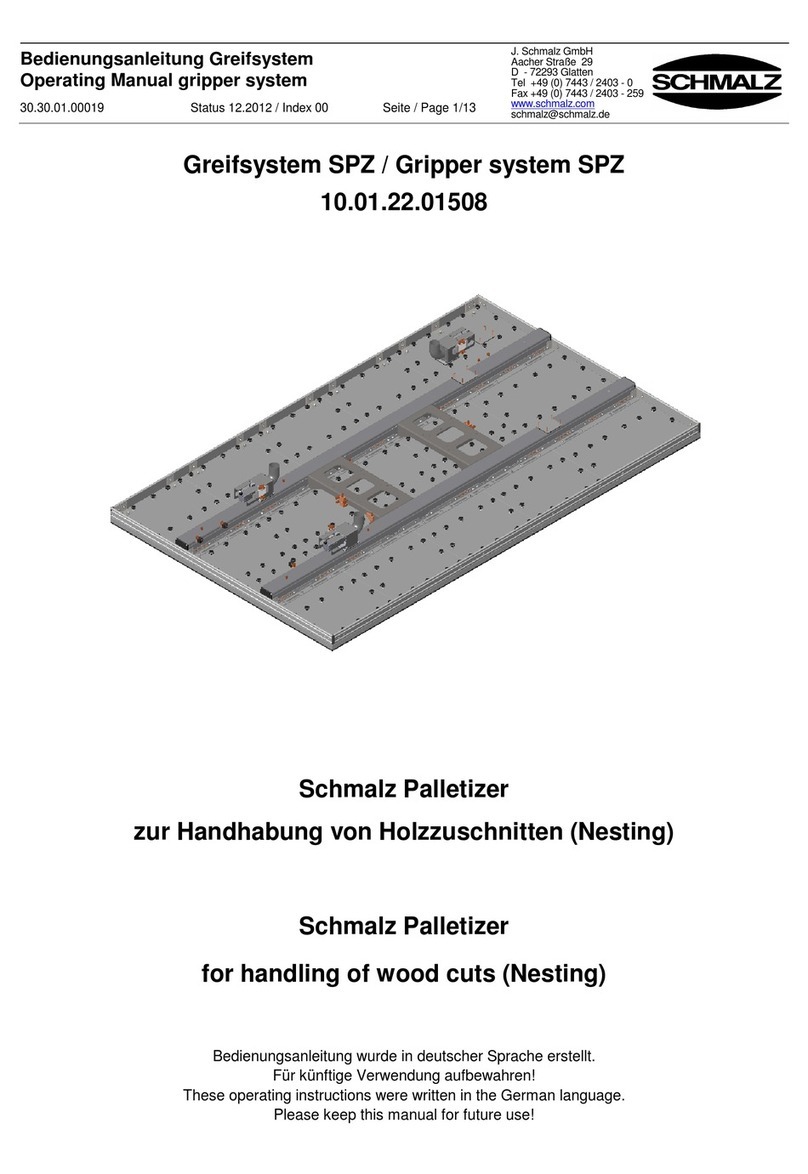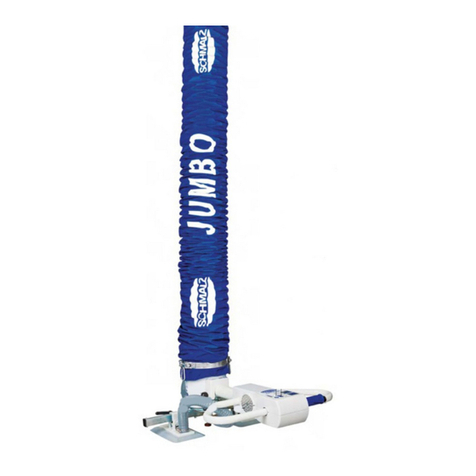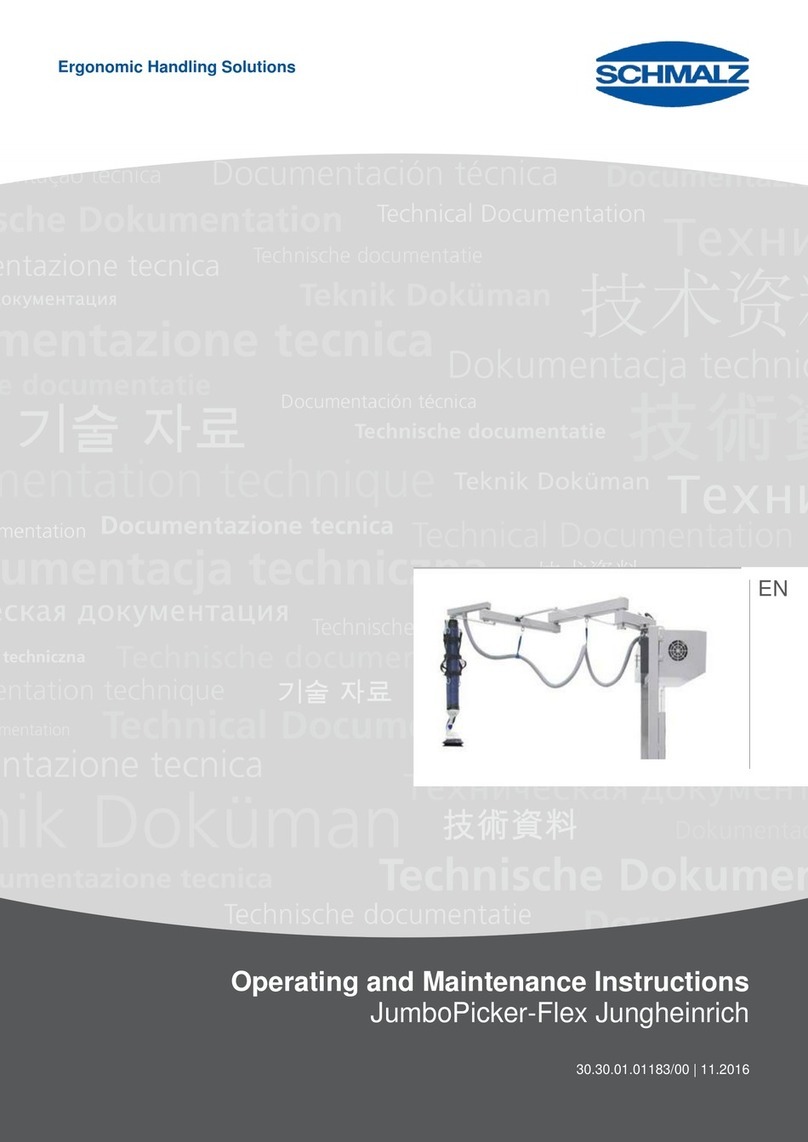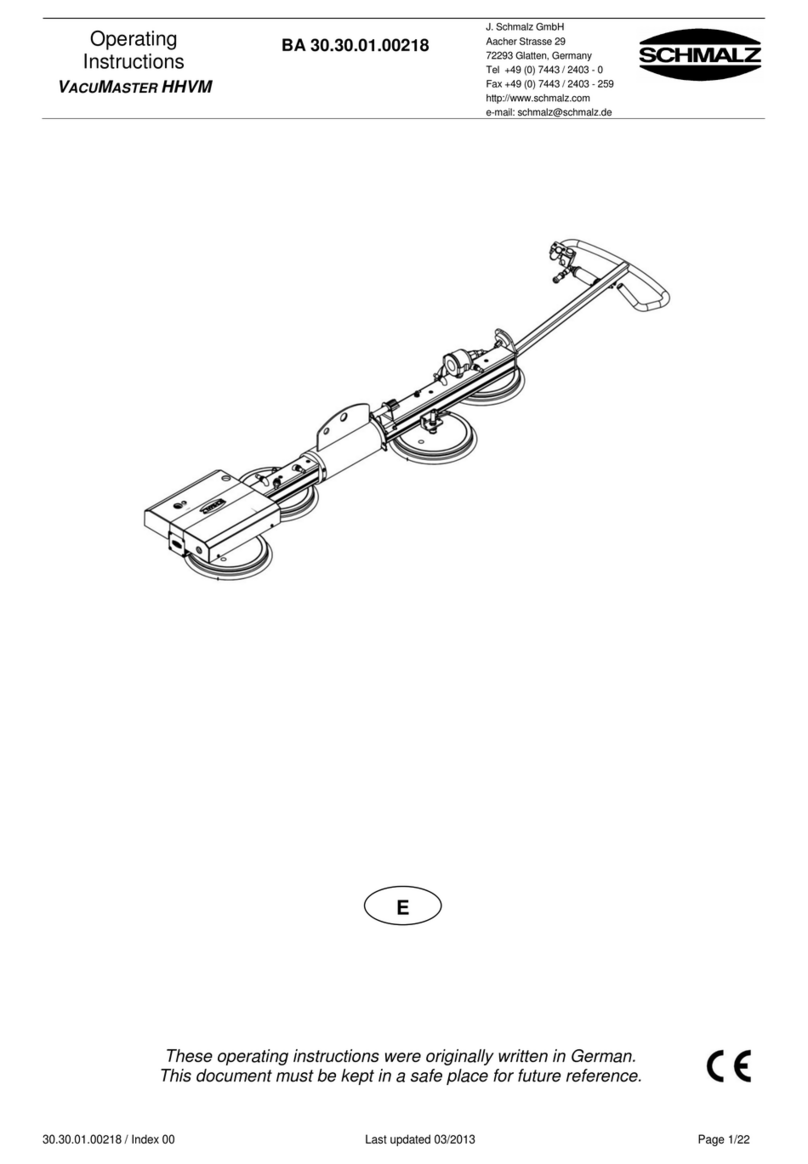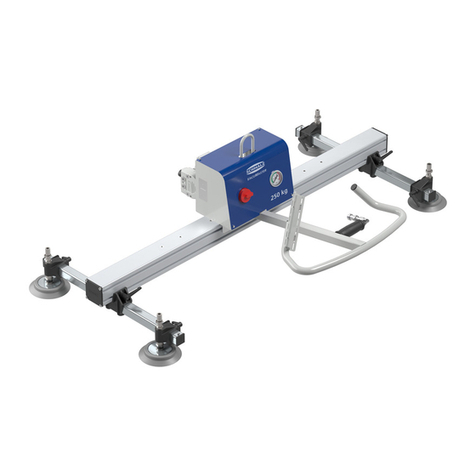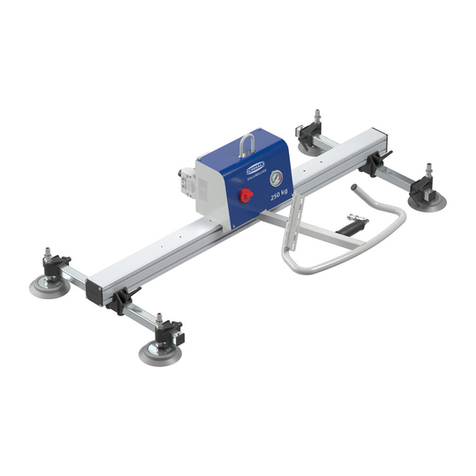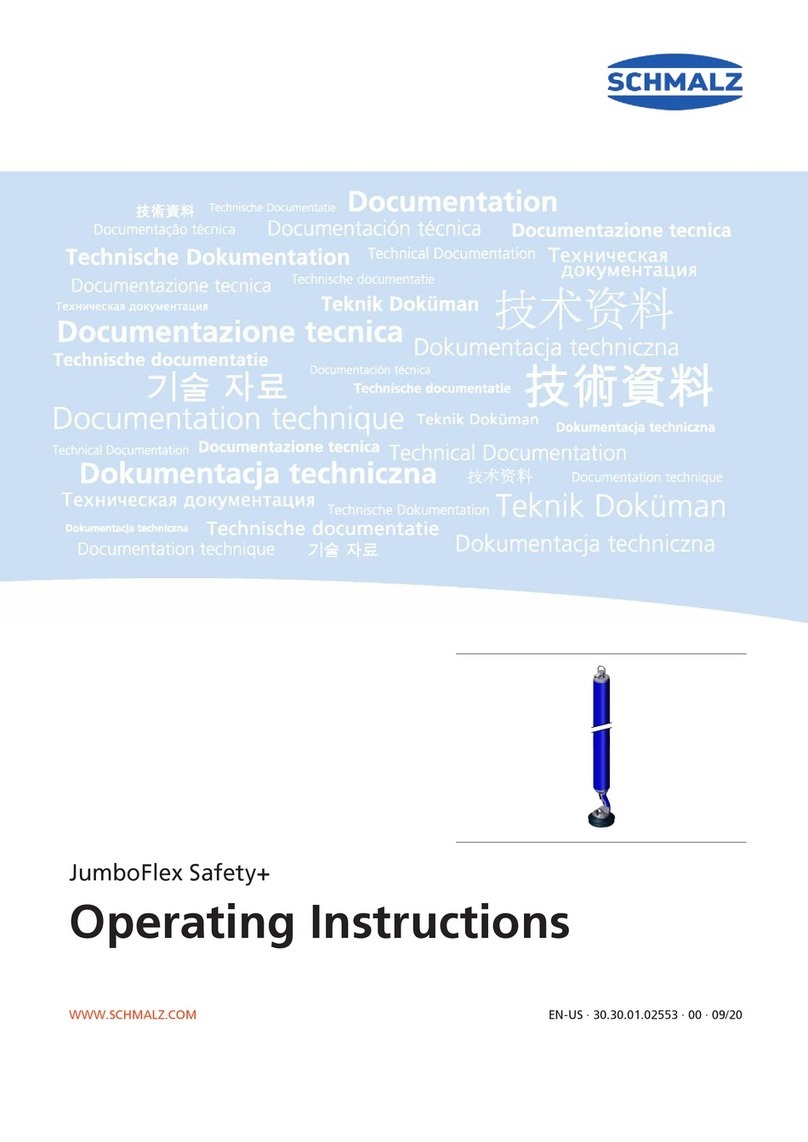
Contents
Vakuum Tube Lifter JumboSprint EX Ejektor
www.schmalz.com
1Safety Instructions...............................................................................................6
1.1 Classification of safety instructions ...................................................................................6
1.2 Warnings ...........................................................................................................................7
1.3 Mandatory symbols ...........................................................................................................7
1.4 Regulations in these instructions.......................................................................................8
1.5 General safety instructions................................................................................................8
1.5.1 Explosion protection..........................................................................................................8
1.5.2 Fundamental safety instructions........................................................................................9
1.6 Intended use......................................................................................................................9
1.7 Non-intended use............................................................................................................10
1.8 Requirements and instructions for installation, maintenance and operating staff...........11
1.9 Installation location/workplace requirements ..................................................................12
1.9.1 Installation location requirements....................................................................................12
1.9.2 Workplace requirements .................................................................................................13
1.10 Danger zone definition ....................................................................................................13
1.11 Emissions........................................................................................................................14
1.12 Personal protective equipment........................................................................................14
1.12.1 Installation/decommissioning and disposal of the tube lifter...........................................14
1.12.2 Operating the tube lifter...................................................................................................15
1.12.3 Troubleshooting/maintenance of the tube lifter...............................................................15
2Product description ...........................................................................................16
2.1 Description of operation ..................................................................................................16
2.2 Components....................................................................................................................16
2.3 Identification ....................................................................................................................17
2.3.1 Type plate........................................................................................................................17
2.4 Compressed air tube.......................................................................................................17
2.5 Turning off compressed air..............................................................................................18
2.6 Ejector .............................................................................................................................18
2.7 Dust filter .........................................................................................................................19
2.8 Vacuum supply hose.......................................................................................................19
2.9 Rotary union....................................................................................................................19
2.10 Lift tube............................................................................................................................19
2.11 Operator handle...............................................................................................................20
2.12 Suction cup......................................................................................................................20
2.13 Safety features ................................................................................................................21
2.13.1 Non-return valve in the rotary union................................................................................21
2.13.2 Vacuum limiting valve......................................................................................................21
2.14 Equipotential bonding......................................................................................................21
2.15 Optional accessories.......................................................................................................21
2.15.1 Quick-change adapter.....................................................................................................21
2.15.2 Rotation unit ....................................................................................................................21
3Technical Data..................................................................................................22
3.1.1 Tube lifter.........................................................................................................................22
3.1.2 Ejector .............................................................................................................................22
4Delivery, packaging and transport.....................................................................23
